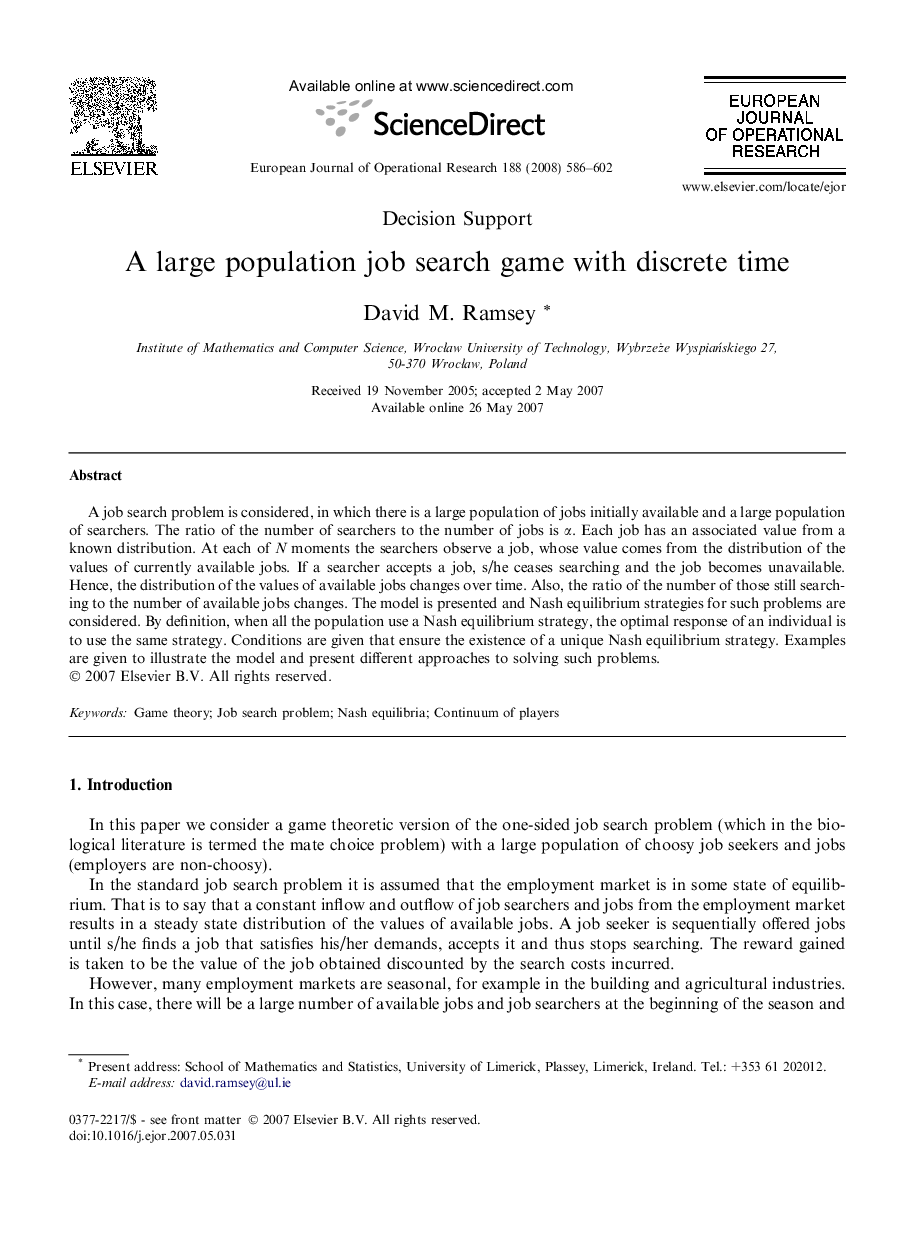| Article ID | Journal | Published Year | Pages | File Type |
|---|---|---|---|---|
| 482922 | European Journal of Operational Research | 2008 | 17 Pages |
A job search problem is considered, in which there is a large population of jobs initially available and a large population of searchers. The ratio of the number of searchers to the number of jobs is α. Each job has an associated value from a known distribution. At each of N moments the searchers observe a job, whose value comes from the distribution of the values of currently available jobs. If a searcher accepts a job, s/he ceases searching and the job becomes unavailable. Hence, the distribution of the values of available jobs changes over time. Also, the ratio of the number of those still searching to the number of available jobs changes. The model is presented and Nash equilibrium strategies for such problems are considered. By definition, when all the population use a Nash equilibrium strategy, the optimal response of an individual is to use the same strategy. Conditions are given that ensure the existence of a unique Nash equilibrium strategy. Examples are given to illustrate the model and present different approaches to solving such problems.
